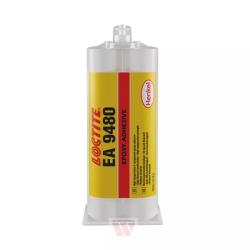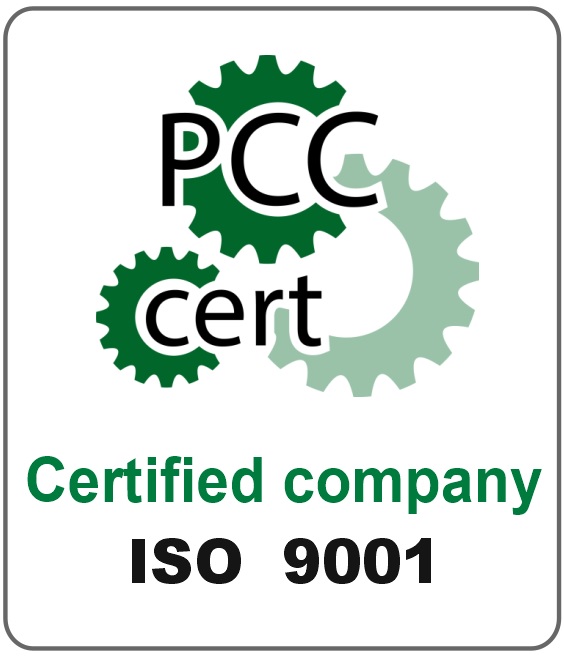Try to find the solution
LOCTITE EA 9480 - 50ml (cream epoxy adhesive, up to 120 °C)
No.
IDH.2056022
Price
Files to download:
- Karta Techniczna - LOCTITE EA 9480
- Technical Data Sheet - LOCTITE EA 9480
- Technisches Datenblatt - LOCTITE EA 9480
- Karta Charakterystyki - LOCTITE EA 9480
- Safety Data Sheet - LOCTITE EA 9480
- Sicherheitsdatenblatt - LOCTITE EA 9480
- Certyfikat WRAS (Aprobata do wody pitnej / Potable water approval)
- Certyfikat Hygiene Institut Gelsenkirchen (Aprobata do wody pitnej / Potable water approval)
Product description:
LOCTITE EA 9480 is a two component room temperature curing epoxy adhesive developed for use in food contact applications. It has a medium cure speed and when cured, has good chemical resistance. Typically LOCTITE EA 9480 shall be used to assemble pieces of metal and / or plastics in food processing and packaging machines as well as household applications such as mixers, pasta machines or microwave ovens. For these applications the adhesive is generally located between the adherent materials, therefore direct food contactof the adhesive is not intended, but may occur incidentally via the bond line of the applied adhesive.Incidental Food Contact: LOCTITE EA 9480 was tested according to EU Plastics Directive 2002/72/EC, and has beencertified by an independent test institute to fulfill the requirements of Article 3 (1a) of the EU Framework RegulationNo. 1935/2004 of the incidental food contact. Further information about the product: biuro@woronko-kleje.pl
Steps to achieve the best adhesive results:
1. For best performance surfaces for bonding should be clean, dry and free of grease. You can use LOCTITE SF 7063. For high strength structural bonds, special surface treatments can increase the bond strength and durability.
2. To use, resin and hardener must be blended. Product can be applied directly from dual cartridges by dispensing through the mixer head supplied. Discard the first 3 to 5 cm of bead dispensed. Using bulk containers, mix thoroughly by weight or volume in the proportions specified in the Product Description Matrix. For hand mixing, weigh or measure out the desired amount of resin and hardener and mix thoroughly. Mix approximately 15 seconds after uniform color is obtained.
3. Do not mix quantities greater than 4 Kg in mass as excessive heat build-up can occur. Mixing smaller quantities will minimize the heat build-up.
4. Apply the adhesive as quickly as possible after mixing to one surface to be joined. For maximum bond strength apply adhesive evenly to both surfaces. Parts should be assembled immediately after mixed adhesive has been applied.
5. Working life of 10g mixed adhesive is 100 minutes (25 °C). Higher temperature and larger quantities will shorten this working time.
6. Keep the assembled parts from moving during cure. The joint should be allowed to develop full strength before subjecting to any service loads.
7. Excess uncured adhesive, before complete cure has occurred can be wiped away from surfaces, clothes,hands by simply washing with warm soapy water.
8. After use and before adhesive hardens, mixing and application equipment should be cleaned with hot soapy water.
Storage:
Store product in the unopened container in a dry location. Storage information may be indicated on the product container labeling.
Optimal Storage: 8 °C to 21 °C. Storage below 8 °C or greater than 28 °C can adversely affect product properties.
Material removed from containers may be contaminated during use. Do not return product to the original container.
Henkel Corporation cannot assume responsibility for product which has been contaminated or stored under conditions other than those previously indicated.
Parameters:
Shear strength, ISO 4587 (cured for 1 week 22 °C) :
Full technical information can be found in the technical data sheet.
LOCTITE EA 9480 is a two component room temperature curing epoxy adhesive developed for use in food contact applications. It has a medium cure speed and when cured, has good chemical resistance. Typically LOCTITE EA 9480 shall be used to assemble pieces of metal and / or plastics in food processing and packaging machines as well as household applications such as mixers, pasta machines or microwave ovens. For these applications the adhesive is generally located between the adherent materials, therefore direct food contactof the adhesive is not intended, but may occur incidentally via the bond line of the applied adhesive.Incidental Food Contact: LOCTITE EA 9480 was tested according to EU Plastics Directive 2002/72/EC, and has beencertified by an independent test institute to fulfill the requirements of Article 3 (1a) of the EU Framework RegulationNo. 1935/2004 of the incidental food contact. Further information about the product: biuro@woronko-kleje.pl
Steps to achieve the best adhesive results:
1. For best performance surfaces for bonding should be clean, dry and free of grease. You can use LOCTITE SF 7063. For high strength structural bonds, special surface treatments can increase the bond strength and durability.
2. To use, resin and hardener must be blended. Product can be applied directly from dual cartridges by dispensing through the mixer head supplied. Discard the first 3 to 5 cm of bead dispensed. Using bulk containers, mix thoroughly by weight or volume in the proportions specified in the Product Description Matrix. For hand mixing, weigh or measure out the desired amount of resin and hardener and mix thoroughly. Mix approximately 15 seconds after uniform color is obtained.
3. Do not mix quantities greater than 4 Kg in mass as excessive heat build-up can occur. Mixing smaller quantities will minimize the heat build-up.
4. Apply the adhesive as quickly as possible after mixing to one surface to be joined. For maximum bond strength apply adhesive evenly to both surfaces. Parts should be assembled immediately after mixed adhesive has been applied.
5. Working life of 10g mixed adhesive is 100 minutes (25 °C). Higher temperature and larger quantities will shorten this working time.
6. Keep the assembled parts from moving during cure. The joint should be allowed to develop full strength before subjecting to any service loads.
7. Excess uncured adhesive, before complete cure has occurred can be wiped away from surfaces, clothes,hands by simply washing with warm soapy water.
8. After use and before adhesive hardens, mixing and application equipment should be cleaned with hot soapy water.
Storage:
Store product in the unopened container in a dry location. Storage information may be indicated on the product container labeling.
Optimal Storage: 8 °C to 21 °C. Storage below 8 °C or greater than 28 °C can adversely affect product properties.
Material removed from containers may be contaminated during use. Do not return product to the original container.
Henkel Corporation cannot assume responsibility for product which has been contaminated or stored under conditions other than those previously indicated.
Parameters:
Shear strength, ISO 4587 (cured for 1 week 22 °C) :
- Steel (grit blasted), N/mm² : 21 to 27,5
- Stainless steel (grit blasted), N/mm² : 12 to 25
- Aluminum (abraded), N/mm² : 11,5 to 15,5
- Aluminum, N/mm² : 10,5 to 18,5
- Zinc dichromate, N/mm² : 6,5 to 12
- Brass, N/mm² : 3,5 to 6,5
- Epoxy, N/mm² : 6,5 to 13,0
- Glass-reinforced plastic (GRP), N/mm² : 2,5 to 5
- Phenolic, N/mm² : 8 to 10
- Hardwood (Mahogany), N/mm² : 7,5 to 13,5
- Softwood (Red Deal), N/mm² : 4 to 12,5
- Polycarbonate, N/mm² : 3,5 to 6,2
- Nylon, N/mm² : 2,0 to 2,5
- Coefficient of Thermal Conductivity, ISO 8302, W/(m·K) : 0,5
- Hardness Shore'a, ISO 868 (durometr D) : 80
- Linear Shrinkage, ASTM D792, % : 1,5
- Elongation at break, ISO 527-3,% : 1,8
- Glass transition temperature, °C: (Tg) DMTA , ASTM E 1640 : 73
Full technical information can be found in the technical data sheet.






